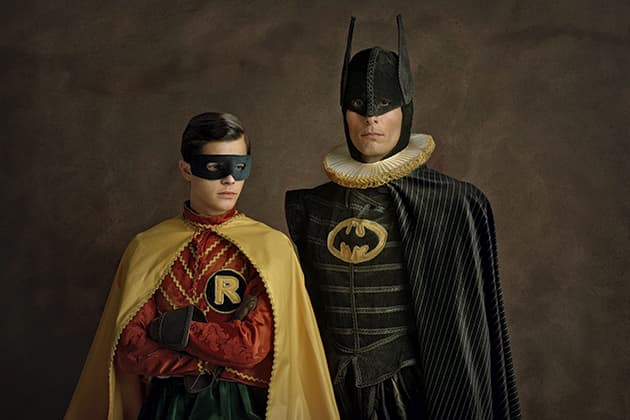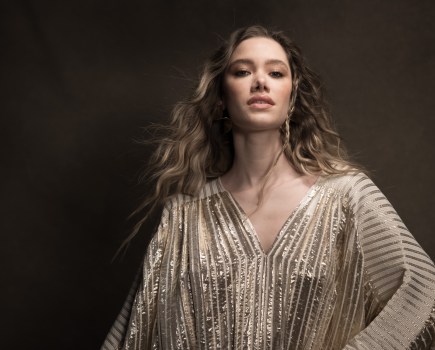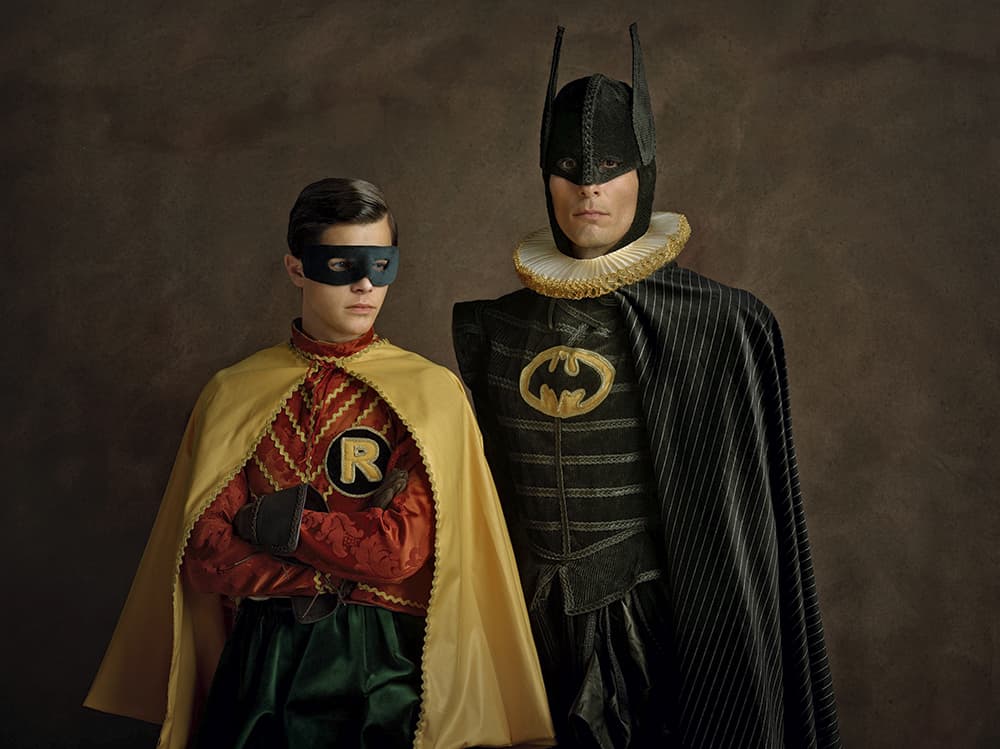
Batman and Robin. All images by Sacha Goldberger.
If Darth Vader had been born in the 15th century, how would the Flemish painter Jan van Eyck have portrayed him? Most Star Wars and comic book devotees are unlikely to spend much time and energy worrying about such a question, but for French photographer Sacha Goldberger this, and other imponderables, turned into an obsession.
Like most people, Sacha became interested in superheroes when he was a kid, but at the same time that he was soaking up Spiderman and the Hulk, he was also observing the classic Flemish portrait paintings adorning his parent’s house.
The result is Super-Flemish, an amazing cultural mash-up that combines American comic book and sci-fi personalities with the techniques of 15th century Flemish portrait painting. It sounds bonkers, but it works brilliantly.
‘These characters in my photographs have become icons to reveal their humanity,’ Sacha explains. ‘They are tired of having to save the world without respite, promised to a destiny of endless immortality, forever trapped in their character. The images allow us to discover, under the patina of time, the unexpected melancholy of those who are invincible.’
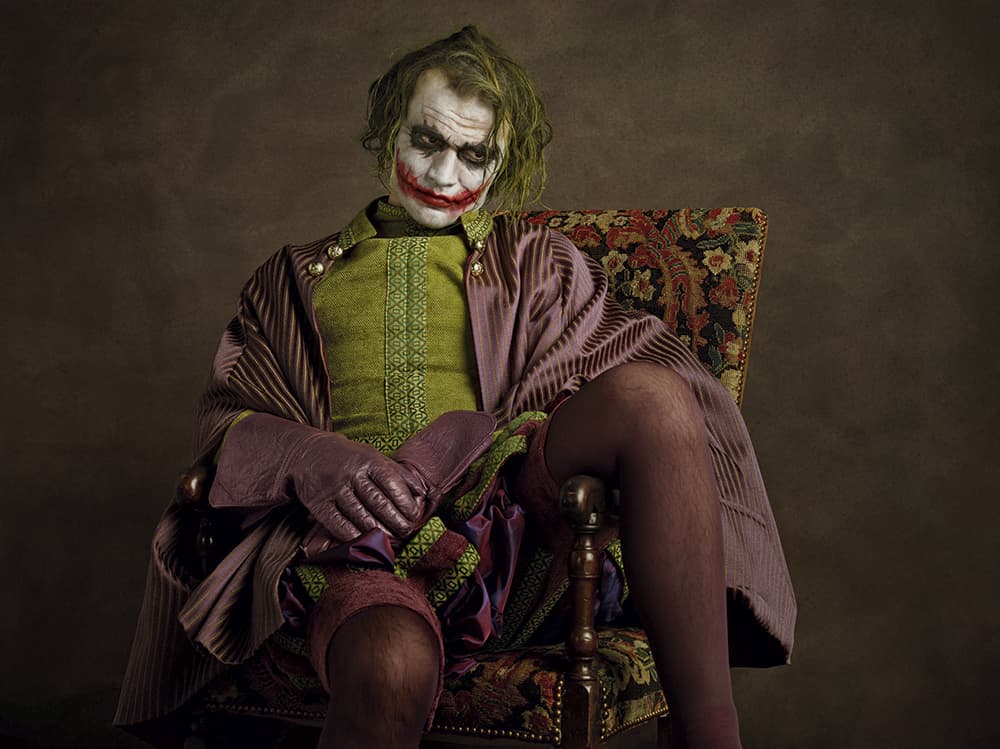
The Joker
Cultural heritage
The collection caused a major stir when it debuted at the Grand Palais in Paris at the end of 2014. Thanks to social media, Sacha now has even more followers.
‘Mixing up superheroes with the techniques of Flemish portrait painting was entirely my idea,’ explains the former art director turned photographer. ‘I don’t know where it came from, but I did a previous project called ‘Mamika’, where I shot my grandmother as a superhero.
‘I love comic books and I love Flemish painting, and every time I am in a major city I head to the art galleries. You have some lovely examples of Flemish art in London. I like to mix things that aren’t supposed to mix.’
Being of Jewish ancestry, Sacha was also intrigued to discover many classic comic-book artists were Jewish, creating invincible characters such as Superman at a time when Europe’s Jews were being persecuted by the Nazis. He began the Super-Flemish project by hooking up with local cosplay groups, where fans dress up as their favourite characters.
‘They are very special people,’ he says. ‘It was great to meet them and see how it all works. But I realised I needed real actors and models as the cosplay people didn’t look enough like the superheroes.’
So, Sacha and his casting director spent six to nine months trying to find lookalikes of Superman, the Joker and the rest from a wide pool of actors, models and comedians.
‘Once we had the cast, I teamed up with a costume director who specialises in historical attire,’ adds Sacha. ‘Every costume was made specifically for the character.’
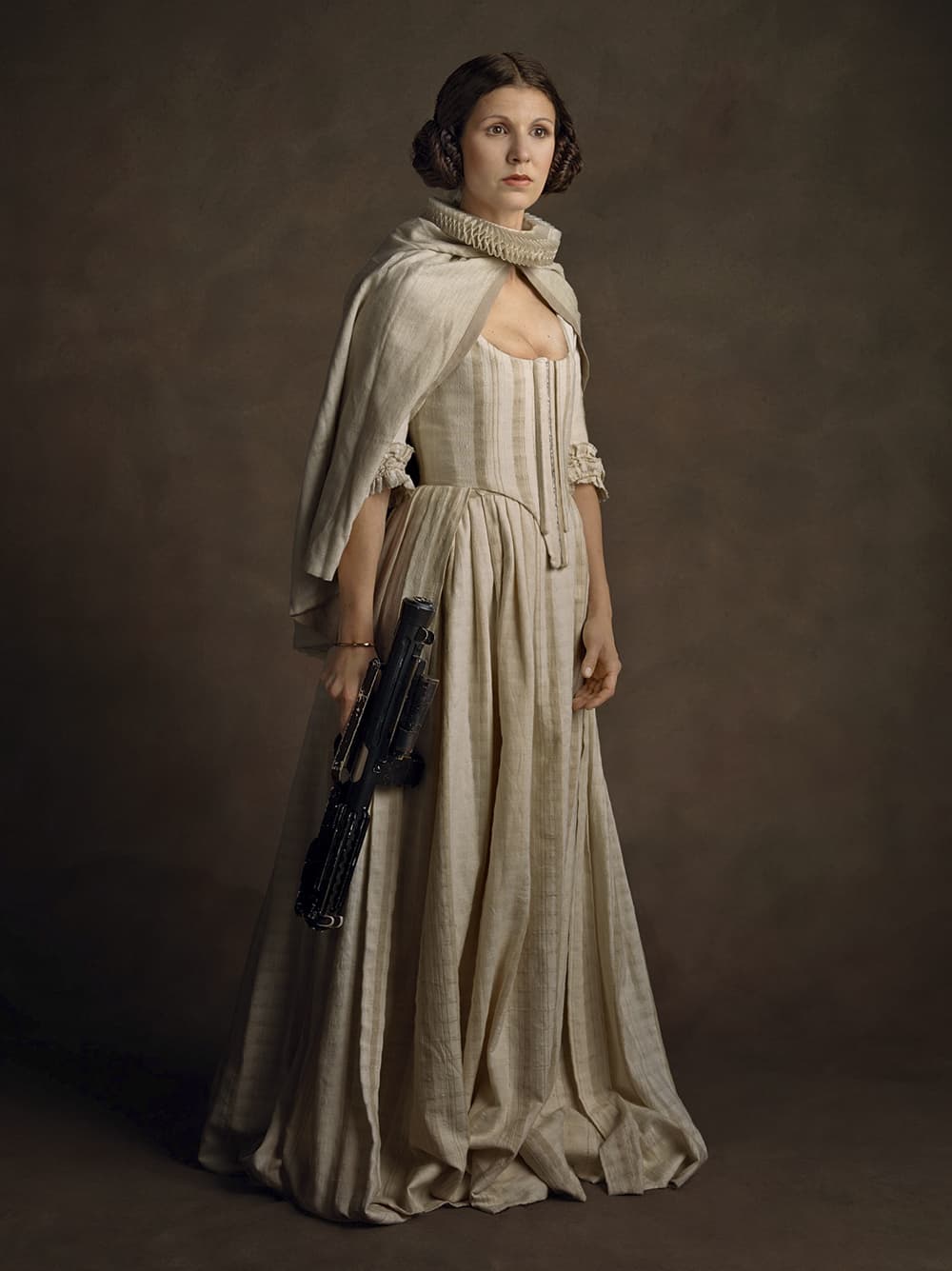
Princess Leia
Personal project
As you can imagine, the Super- Flemish project didn’t come cheap, eventually involving 110 people, including the cast.
‘It was a personal project over three years, so I had to pay for it myself,’ says Sacha. ‘I wanted it to be perfect. Even though it was a personal project, it had to be as good as the work I do for my clients.
‘We had so many nice costumes, with five stylists as well as the costume designer. Then there were the backgrounds, objects made specifically for the shoot and so on.
‘My next project, about history, is even bigger. There’s a team of 150 involved. I may be the photographer, but all my strength comes from the great people I work with.’
However, bringing on board a large team didn’t mean everything ran smoothly all the time.
‘Everything about Super-Flemish was difficult in different ways,’ Sacha reflects. ‘Superman was particularly tough, as the guy didn’t look much like him, so there was a lot of Photoshop morphing.’
For other characters, particularly the Hulk, the correct look was achieved in more traditional ways using special effects and make-up.
‘The Hulk model wore a wig and his forehead was made from silicone. Then he was painted green. We didn’t need to use Photoshop much for Princess Leia, either, as the model looked so like her in real life.’
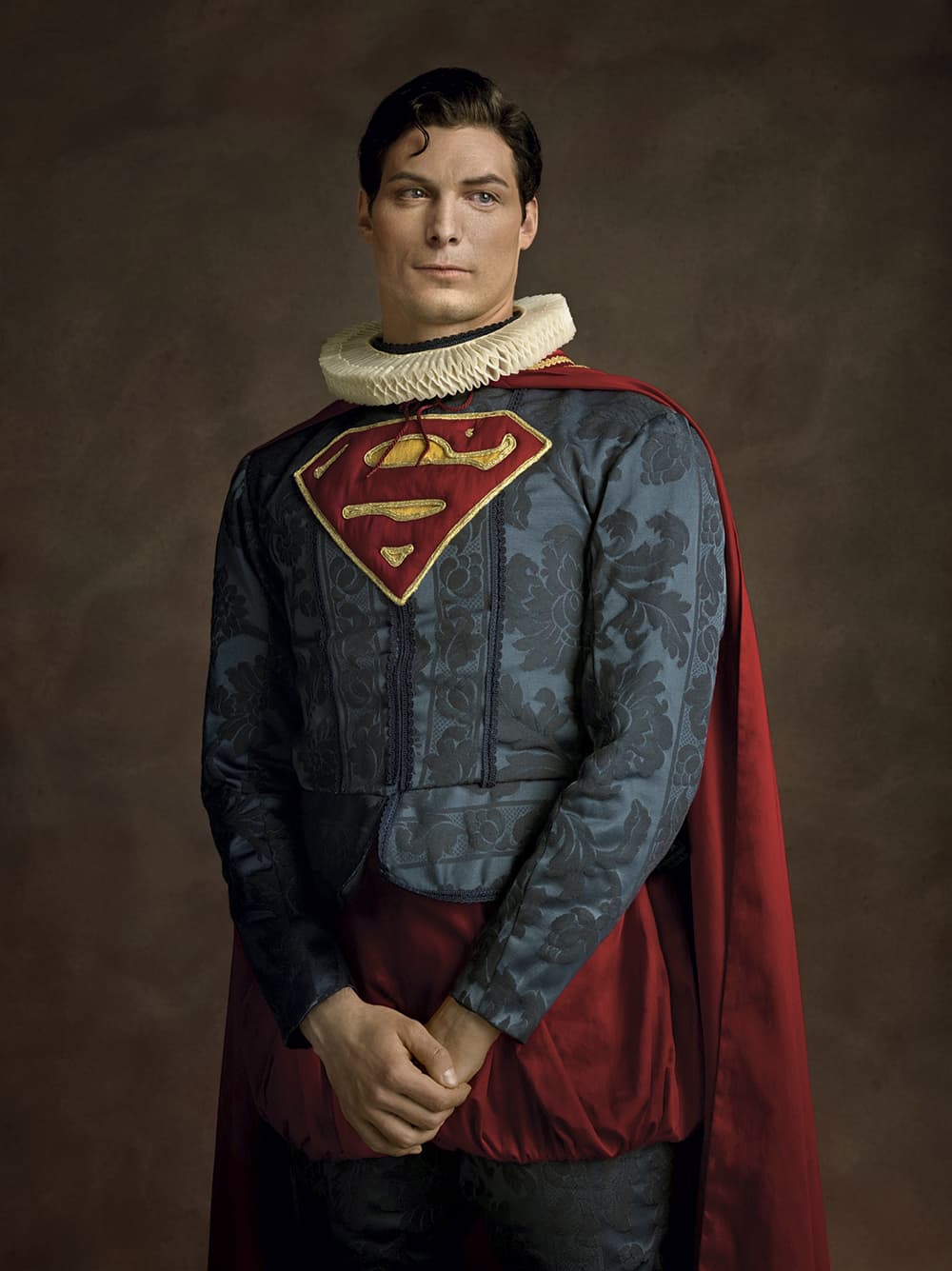
Superman
The human factor
For Sacha, the spirit and emotion of the project are more interesting to talk about than the technical challenges.
‘We love superheroes,’ he says. ‘They are very cool and very strong. Coming from the USA, nothing can happen to them. But they are not very sympathique; how do you say, not very “nice and friendly”.
‘We humans are very ordinary, and in European culture, people are more human in terms of how they are portrayed in art. So Super- Flemish was all about taking these superhuman characters and putting them in different settings and positions, in order to make them more human.
‘I wanted to mix invincibility with humanity. For example, we originally had the Hulk screaming, but it didn’t work so we decided to have him looking sincere – depressed, even. There’s a contrast between Hulk as we imagine him, and Hulk in the picture.’
Sacha spent three years on the project and learned some valuable lessons along the way.
‘I learned that nothing is impossible, however complicated it turns out to be in the end,’ he says. ‘With faith, energy, a good team and time, you can achieve anything.
‘I also learned a lot about lighting. With such a huge project, it was all about test and test again. Then, I learned that however good your team, no one person can do everything, so you have to identify their strengths.
‘It was like running a small company in some ways, but all the effort was worth it.’
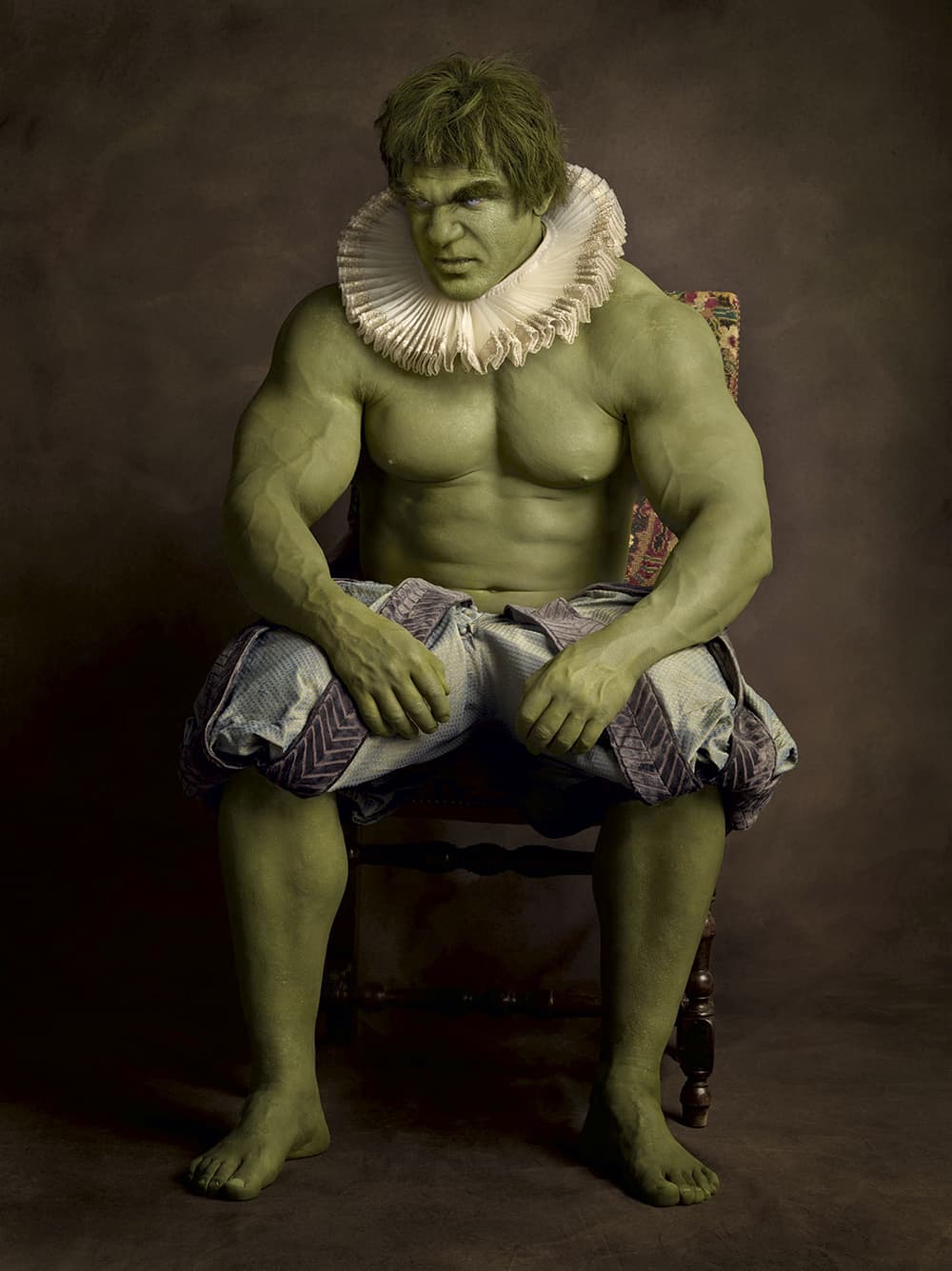
The Hulk
Light and shade
The subtle but striking lighting is a major factor in the success of these images. ‘I studied the techniques of Flemish portrait painting a lot with my team,’ sacha explains. ‘If you look at Rembrandt and these kinds of portrait painters, they used a lot of chiaroscuro, combining a light side with a darker side. It’s soft, but also strong.’
To get this look with his superhero models, sacha used two huge 4×4 softboxes.
‘There were Elinchrom lights behind the larger softbox, which lit the character on one side,’ he says. ‘On the other side I used a smaller softbox to ensure the darks weren’t too dark.’
Sacha used several backgrounds, painted by his set designer, and his camera of choice was a Hasselblad 503 CW with a Phase One P65+ back.
‘I used 80mm or 120mm lenses, which were perfect. I don’t like to use wideangle lenses for this kind of job.’
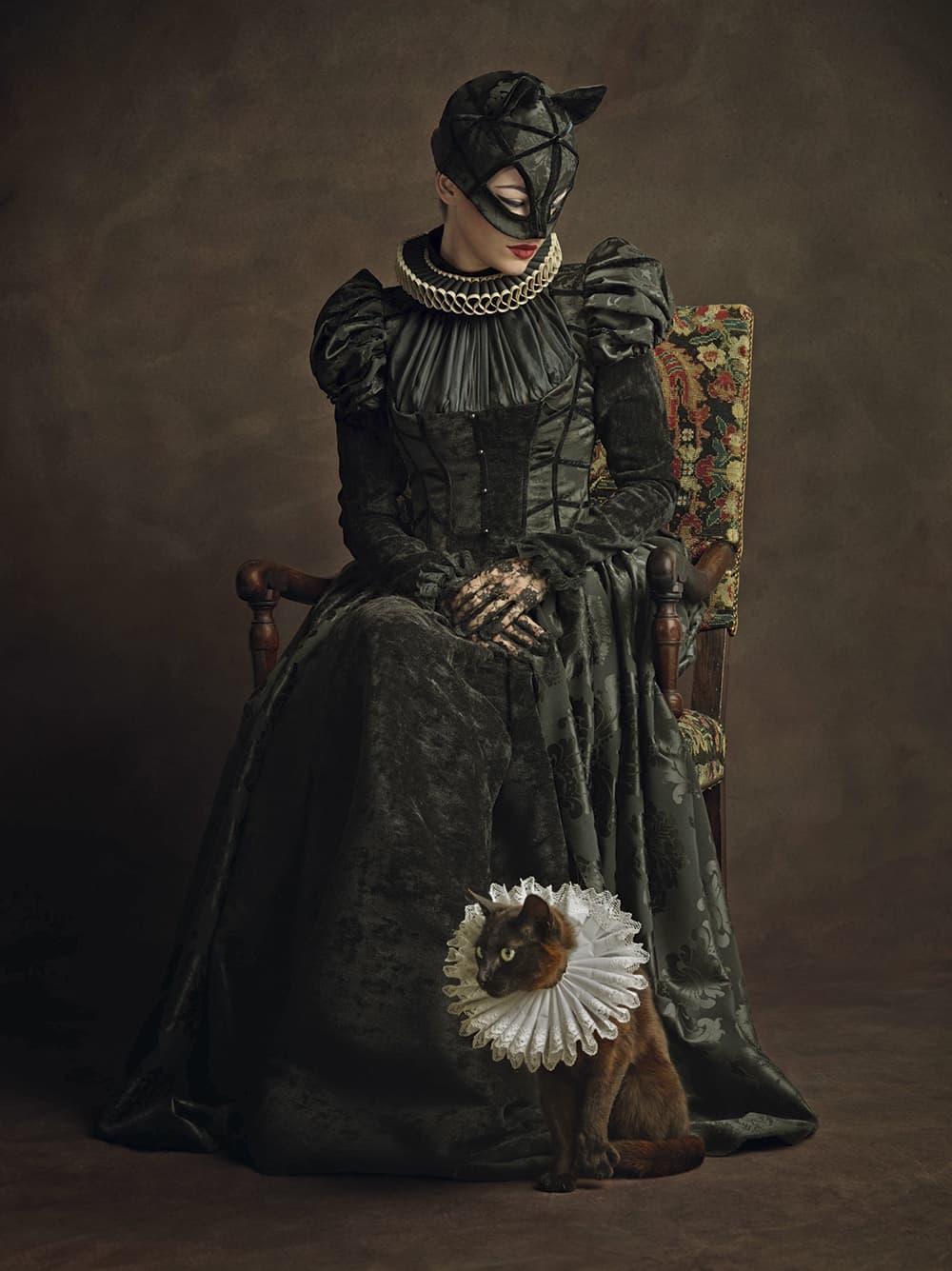
Catwoman
Sacha Goldberger is a French photographer who specialises in fashion and advertising. His books include The Little Book of I Love You, which has sold more than 100,000 copies worldwide, and ‘Mamika’, a series of photographs of his grandmother. See www.sachagoldberger.com

